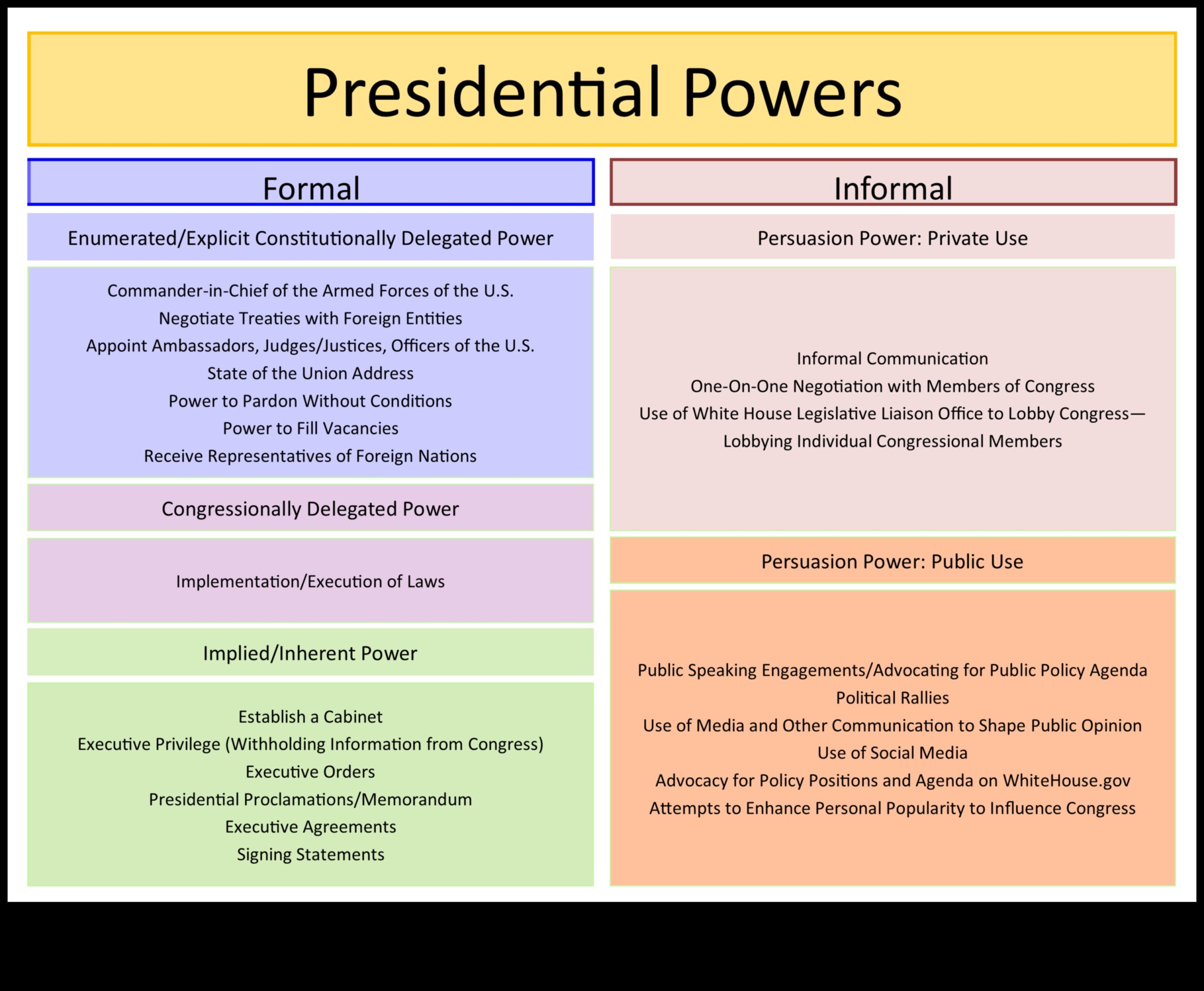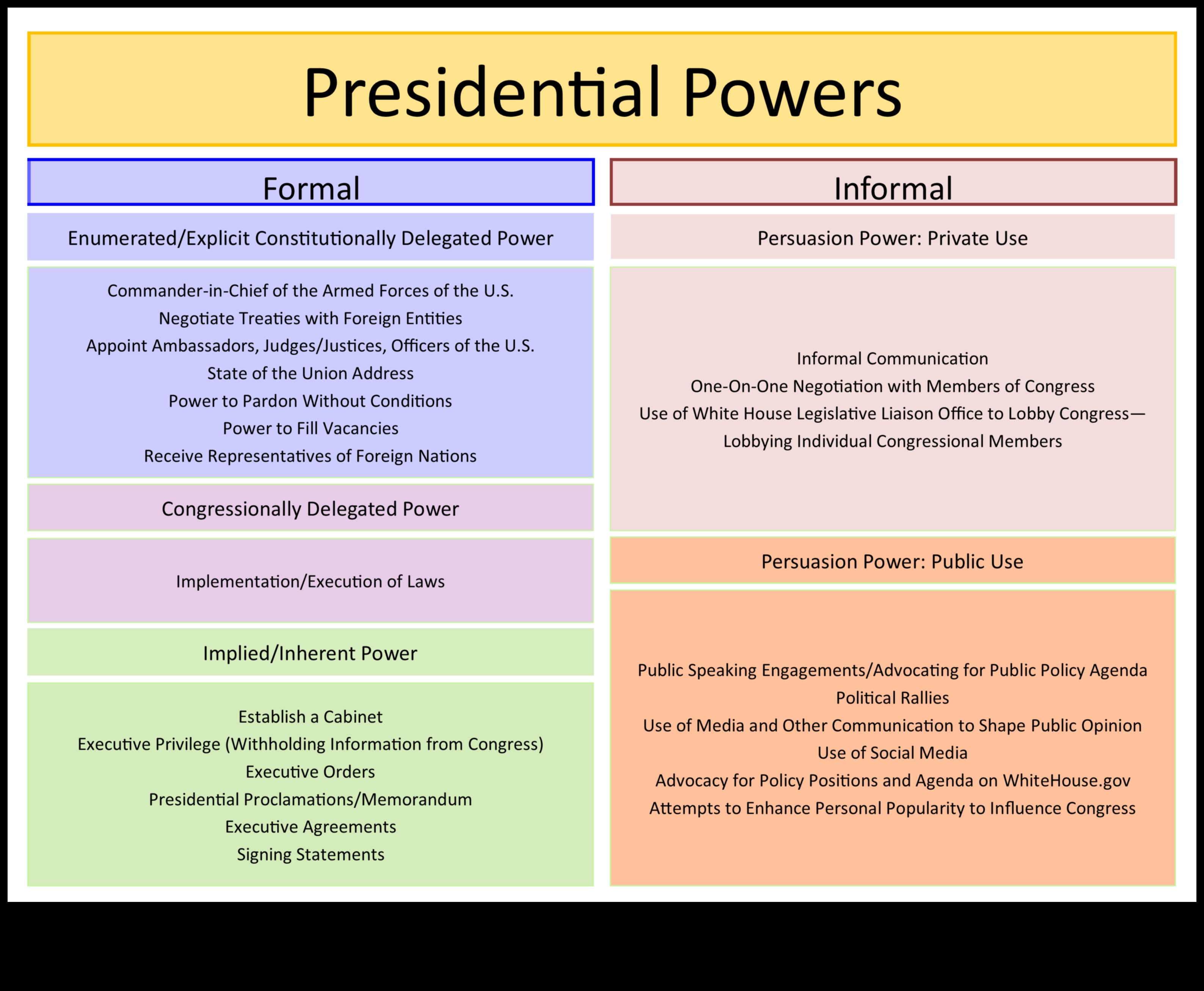
I. Introduction
II. The President’s Constitutional Powers
III. Executive Orders
IV. The Pardon Power
V. The Commander-in-Chief Power
VI. The Treaty Power
VII. The Appointment Power
VIII. The Veto Power
IX. The Impeachment Power
X. FAQ
| Topic | Quizlet Feature |
|---|---|
| Constitution |
|
| Executive Branch |
|
| President |
|
| Powers |
|
| Quizlet |
|
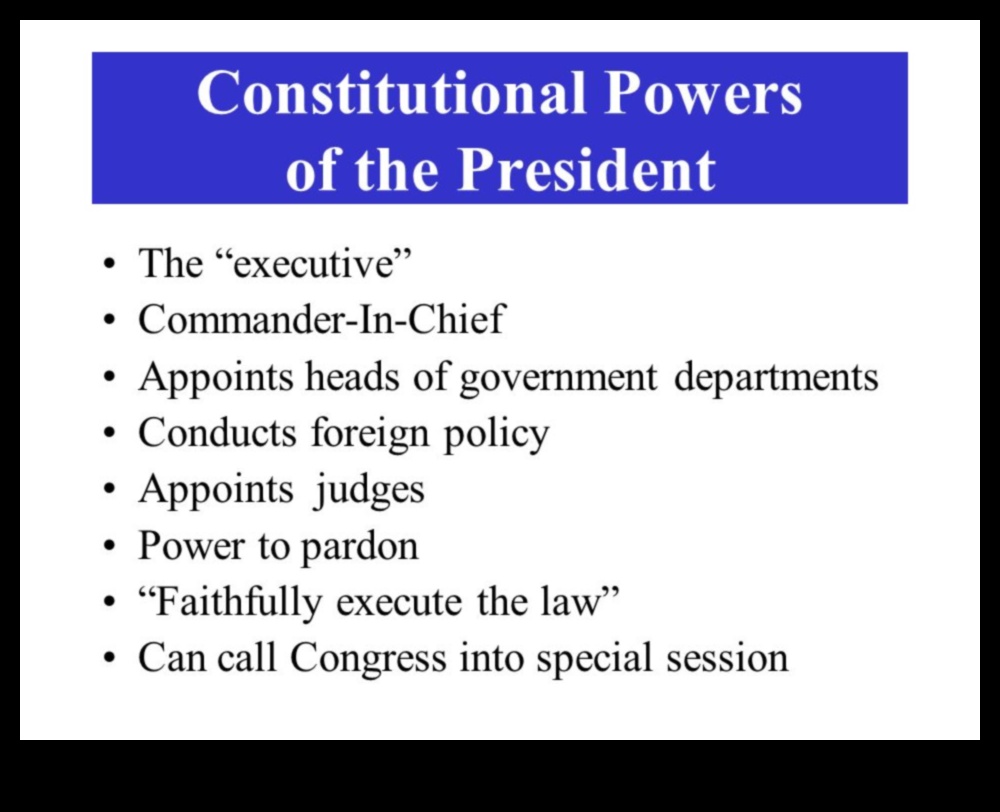
II. The President’s Constitutional Powers
The President of the United States is the head of the executive branch of the federal government. The Constitution grants the President a number of powers, including the following:
- The power to execute the laws of the United States
- The power to appoint ambassadors, judges, and other federal officers
- The power to make treaties with foreign nations
- The power to command the armed forces
- The power to grant pardons
- The power to veto laws passed by Congress
These powers are essential to the President’s ability to lead the executive branch and carry out the laws of the United States.
II. The President’s Constitutional Powers
The President of the United States is the head of the executive branch of the federal government. The President is also the commander-in-chief of the armed forces. The Constitution grants the President a number of powers, including:
- The power to execute the laws
- The power to appoint and remove federal officials
- The power to make treaties
- The power to veto legislation
- The power to grant pardons
The President’s constitutional powers are subject to a number of checks and balances, including the power of Congress to impeach the President and the power of the Supreme Court to declare laws unconstitutional.
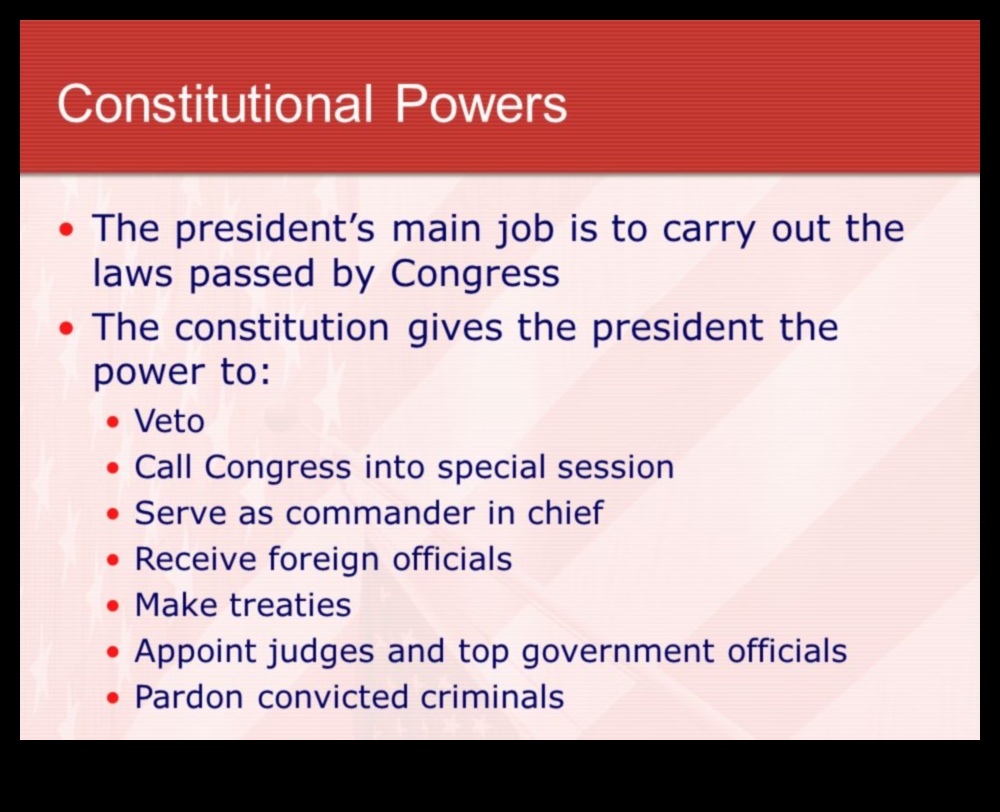
IV. The Pardon Power
The pardon power is the power of the president to forgive federal crimes. It is granted to the president by Article II, Section 2 of the United States Constitution. The pardon power is absolute, meaning that the president can pardon any federal crime, regardless of whether or not the person has been convicted. The pardon power can be used to pardon individuals, groups of people, or even entire classes of people.
The pardon power has been used by presidents for a variety of reasons. Presidents have used the pardon power to pardon political allies, to pardon people who have been convicted of crimes that they believe are unjust, and to pardon people who have served their sentences and have been rehabilitated.
The pardon power is a controversial power. Some people believe that the pardon power is too broad and that it allows presidents to abuse their power. Others believe that the pardon power is necessary to ensure that the president has the flexibility to deal with the unique challenges of the executive branch.
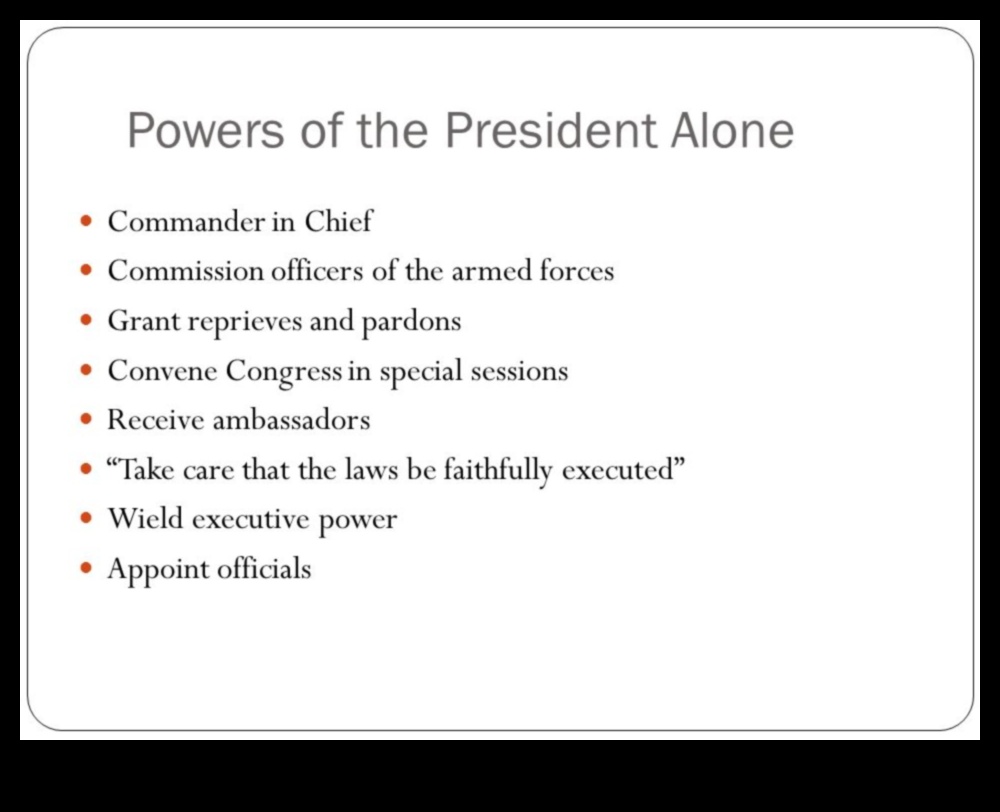
V. The Commander-in-Chief Power
The President is the Commander-in-Chief of the armed forces of the United States. This means that the President has the ultimate authority over the military and can direct its operations. The President also has the power to appoint and remove military officers, and to make treaties with foreign nations.
The Commander-in-Chief power is one of the most important powers of the President, and it is essential for the President to be able to effectively lead the military and protect the nation from threats.
VI. The Treaty PowerThe President has the power to make treaties with foreign nations, subject to the advice and consent of the Senate. The Senate must approve a treaty by a two-thirds vote.
The President’s treaty power is important because it allows the United States to enter into agreements with other countries on a variety of issues, including trade, defense, and immigration.
The President’s treaty power is also limited by the Constitution. For example, the President cannot make a treaty that violates the Constitution or that would require the expenditure of funds that have not been appropriated by Congress.
The President’s treaty power has been used to negotiate a wide range of treaties, including the North American Free Trade Agreement (NAFTA), the Paris Climate Agreement, and the Iran nuclear deal.
VII. The Appointment Power
The Appointment Power is the authority of the President to appoint individuals to fill certain government positions. The President is responsible for appointing the heads of all executive departments, as well as ambassadors, judges, and other high-ranking officials. The Appointment Power is limited by the requirement that the President must obtain the consent of the Senate for all appointments except those to the Supreme Court.
The Appointment Power is an important part of the system of checks and balances in the United States government. It allows the President to appoint individuals who share his or her political views to key positions in the government, but it also prevents the President from becoming too powerful by requiring the consent of the Senate.
The Appointment Power has been used by Presidents to appoint individuals who have helped to shape the direction of the United States government. For example, President Franklin D. Roosevelt used the Appointment Power to appoint individuals who helped to implement the New Deal, a set of policies that helped to lift the United States out of the Great Depression.
The Appointment Power is a significant tool that the President can use to influence the direction of the United States government. It is a power that should be used responsibly and in a way that is consistent with the Constitution.
The Veto PowerThe veto power is the ability of the president to reject a bill passed by Congress. The president may veto a bill for any reason, but the veto can be overridden by a two-thirds vote of both houses of Congress. The veto power is an important check on the power of Congress, as it prevents the legislative branch from passing laws that the president does not agree with.
The veto power has been used by presidents of both parties to prevent the passage of laws that they believe are unconstitutional, unwise, or unnecessary. For example, President George Washington vetoed the Judiciary Act of 1789, which would have given the Supreme Court original jurisdiction over a wide range of cases. President Abraham Lincoln vetoed the Wade-Davis Bill, which would have required the Reconstruction governments of the South to ratify the Thirteenth Amendment before being readmitted to the Union. President Franklin D. Roosevelt vetoed the Social Security Act, which would have created a national social insurance program.
The veto power is a powerful tool that can be used to shape the legislative agenda of the United States government. However, the veto power is not absolute, and it can be overridden by a two-thirds vote of both houses of Congress.
IX. The Impeachment PowerThe impeachment power is the only way to remove a president from office. It is a two-step process that begins in the House of Representatives, where a majority vote is required to impeach the president. If the president is impeached, the case then moves to the Senate, where a two-thirds vote is required to convict the president and remove him from office.
The impeachment power is intended to be used as a last resort to remove a president who has committed “high crimes and misdemeanors.” These are offenses that are considered to be so serious that they warrant removal from office. Examples of high crimes and misdemeanors include treason, bribery, and abuse of power.
The impeachment power has only been used twice in American history, both times against presidents who were accused of abusing their power. In 1868, President Andrew Johnson was impeached by the House of Representatives but acquitted by the Senate. In 1974, President Richard Nixon resigned from office before he could be impeached by the House of Representatives.
The impeachment power is a powerful tool that can be used to remove a president from office if he or she has committed serious crimes. However, it is important to note that the impeachment power should only be used as a last resort, and that it should not be used for political purposes.
Q: What are the three branches of government?
A: The three branches of government are the legislative branch, the executive branch, and the judicial branch.
Q: What is the role of the president in the executive branch?
A: The president is the head of the executive branch and is responsible for enforcing the laws of the United States.
Q: What are some of the powers of the president?
A: Some of the powers of the president include the power to veto laws, the power to appoint federal judges, and the power to make treaties.
